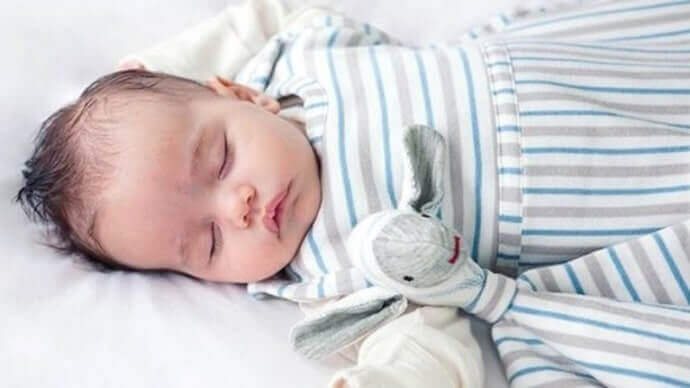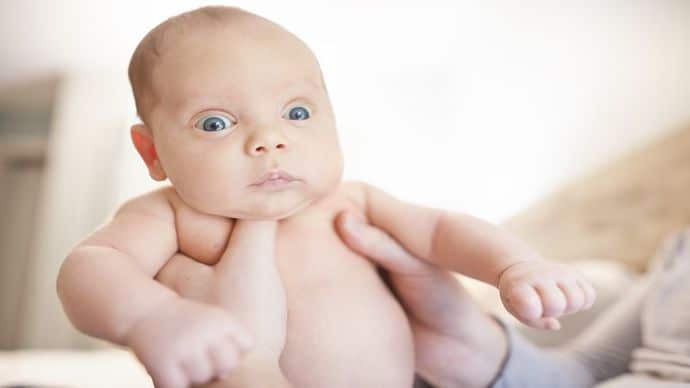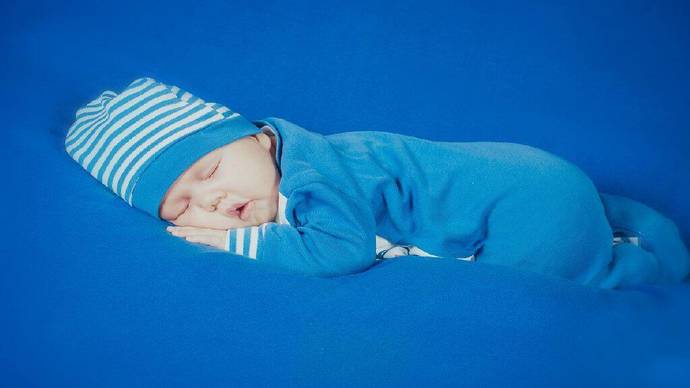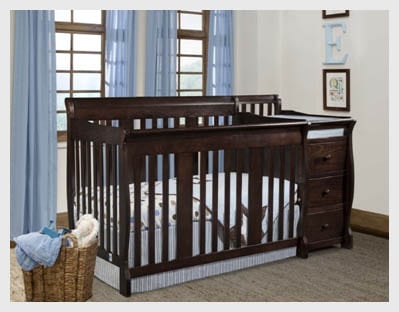As a new parent, you may have noticed that your baby often sleeps with their butts up in the air. While this may seem unusual or even uncomfortable, it’s actually a common and natural sleeping position for infants. Let’s explore the reasons behind why babies sleep with their butts up, and what it means for their sleep patterns and development.
Understanding baby sleep is crucial for providing a safe and comfortable sleep environment for your little one. By learning about positional preferences in baby sleep and the factors that influence them, you can promote healthy sleep patterns and contribute to your baby’s physical and cognitive development.

Key Takeaways:
- Babies often sleep with their butts up, which is a natural and common behavior.
- Understanding baby sleep patterns and positional preferences can help you create a safe and comfortable sleep environment for your little one.
- The position your baby sleeps in can impact their physical and cognitive development, making quality sleep crucial for their growth.
- By exploring the reasons behind why babies sleep with their butts up, you can gain a deeper understanding of your baby’s sleep habits.
- Stay tuned to learn more about baby sleep positions and how they can impact your little one’s well-being.
Sleeping Positions of Babies and Their Preferences
As a parent, it’s understandable to be concerned about your baby’s sleeping habits and positions. After all, they spend a significant amount of time asleep during their early months. Babies tend to adopt different sleeping positions, with some being more common than others.
One of the most frequently observed sleep positions for infants is sleeping with their butts up. This position is also known as the “fetal position.” Sleeping with their butts up may be a natural posture for babies because it is similar to the positioning they had in the womb. In addition, this position can help to soothe and calm babies, allowing them to sleep more soundly.
Babies also tend to prefer sleeping on their stomachs. However, this position is not always safe and is not recommended by pediatricians. The American Academy of Pediatrics (AAP) recommends that babies sleep on their backs to reduce the risk of sudden infant death syndrome (SIDS).
Other sleeping positions that babies may adopt include sleeping on their sides, in a slightly inclined position, or even stretched out completely. These positions may depend on the baby’s age, size, and level of comfort.
The key to ensuring that your baby sleeps safely and comfortably is to observe their natural preferences and adapt their environment accordingly. Consider investing in a good quality crib mattress and fitted sheets that allow air to flow through. Keep all soft objects and loose bedding out of the crib to reduce the risk of suffocation.
It’s also essential to keep an eye on your baby’s sleeping habits and positions to ensure that they are comfortable and not in any discomfort. If you notice any signs of discomfort or unusual sleeping positions, consult with your pediatrician.
In the next section, we’ll discuss the comfort and support provided to babies when they sleep with their butts up and the potential benefits associated with this position.
The Comfort and Support Provided by Sleeping with Butts Up
Have you ever wondered why babies often sleep with their butts up? One of the main reasons is that it’s a natural and comfortable position for infants. Sleeping with their butts up allows babies to flex their hips and hold their legs in a tucked position, which mimics the fetal position they were in while in the womb.
The sleep posture of infants is also influenced by their physical development. As babies grow, their bones, muscles, and joints undergo various changes that can affect their preferred sleeping position. For example, infants with reflux or colic may find it more comfortable to sleep on their left side or with their upper body slightly elevated.
But why is sleeping with butts up particularly beneficial for babies? This position provides good support for the baby’s head, neck, and back, which is essential for their development. It also helps keep their airway open, reducing the risk of breathing difficulties during sleep.
Another benefit of sleeping with butts up is that it can help prevent flat head syndrome, a condition in which the back or side of a baby’s head becomes flattened due to prolonged pressure on one area. The position allows for even distribution of the baby’s weight, reducing the risk of flat spots developing.
Overall, the natural inclination for babies to sleep with their butts up is a positive thing for their comfort and development. However, it’s important to ensure that babies are placed on their back to sleep, as this position has been shown to reduce the risk of Sudden Infant Death Syndrome (SIDS). If your baby seems uncomfortable in this position, try experimenting with different sleep setups or consult a pediatrician for advice.
Understanding Baby Sleep Patterns and Development
As a parent, understanding your baby’s sleep patterns and preferred sleep positions can go a long way in ensuring their overall well-being and development. Babies have different sleep patterns compared to adults, and it’s essential to take note of their unique needs.
One of the crucial factors that can influence your baby’s sleep position is their age. Newborns tend to sleep in a curved position, while older babies prefer sleeping on their sides or stomach. As your baby grows, their preferred sleep position may change, and it’s essential to monitor these changes to ensure they are comfortable and safe.
Another critical factor is the quality of sleep they get. Babies need more sleep than adults, and their sleep patterns are primarily influenced by feeding and diaper changes. Ensuring that your baby is comfortable and not hungry before bedtime can help promote better sleep quality and, in turn, contribute to their physical and cognitive development.
The position your baby sleeps in can also impact their physical development. For instance, sleeping on their back can help prevent sudden infant death syndrome (SIDS) and promote healthy spinal development. Similarly, sleeping with their butts up offers support to their back and neck muscles, promoting healthy growth and development.
Understanding your baby’s sleep patterns and preferred sleep position can help you create a safe and comfortable sleep environment that promotes optimal development. It’s essential to keep in mind that sleep patterns and positions are unique to each baby, and what works for one may not work for another.
Consulting with your pediatrician can help you get a better understanding of your baby’s sleep patterns and preferred sleep positions, and they can provide personalized advice and recommendations to ensure your little one is getting the best possible sleep.
The Key Factors Influencing Baby Sleep Positions and Tips for Parents
As a parent, you may wonder why your baby sleeps in a particular position. Understanding the factors influencing your baby’s sleep position is crucial in creating a safe and comfortable sleep environment. Here are some key factors that affect your baby’s sleep position:
Baby Sleep Patterns
Babies have different sleep patterns that can affect their preferred sleep position. Some babies sleep better on their side, while others prefer sleeping on their back or stomach. Understanding your baby’s sleep pattern can help you identify their preferred sleep position.
Positional Preferences in Baby Sleep
Over time, babies develop positional preferences based on their individual comfort and needs. For instance, some babies may prefer sleeping with their butts up, while others may prefer a different position. It’s important to understand your baby’s preferences and create a sleep environment that accommodates them.
Infant Sleep Positions
The position your baby sleeps in can also be influenced by other factors, such as reflux or breathing problems. For instance, babies with acid reflux may prefer sleeping on their side or back, while those with breathing difficulties may prefer sleeping on their stomach. If you notice any problems with your baby’s breathing or digestion, consult your pediatrician for advice on the best sleep position for your baby.
Here are some tips for creating a safe and comfortable sleep environment for your baby:
- Make sure your baby’s crib or bassinet meets safety standards and is free of any loose bedding or soft objects that could pose a suffocation risk.
- Ensure that your baby’s sleep surface is firm and flat.
- Avoid placing your baby to sleep on their stomach, as this increases the risk of Sudden Infant Death Syndrome (SIDS).
- Place your baby to sleep in their preferred position, but be prepared to change their position if recommended by your pediatrician.
- Pay attention to your baby’s breathing and digestion, and consult your pediatrician if you notice any problems.
By understanding the factors influencing your baby’s sleep position and following these tips, you can create a safe and comfortable sleep environment that promotes healthy sleep patterns and optimal development.
The Key Factors Influencing Baby Sleep Positions and Tips for Parents
Understanding your baby’s sleep patterns and positional preferences is crucial in creating a safe and comfortable sleep environment for them. Here are some key factors that can influence your baby’s sleep position:
Natural Preferences
Just like adults, babies have their preferred sleeping positions. Some babies like to sleep on their sides, while others prefer to sleep on their backs or stomachs. It’s essential to observe your baby’s sleep position to understand their natural preferences.
Environmental Factors
The sleep environment also plays a significant role in the baby’s sleep position. Factors such as the temperature of the room, the type of bedding, and room lighting can all affect the baby’s comfort level and position while sleeping. Ensure that the sleeping environment is conducive to your baby’s preferred sleep position.
Comfort and Support
The comfort and support provided by the sleeping position are also crucial in maintaining a safe and comfortable sleep environment. For instance, babies who sleep with their butts up may find it more comfortable due to the added support it provides to their back and neck muscles.
Here are some tips to help you create a safe and comfortable sleep environment for your baby:
Use Safe Sleep Equipment
Ensure that your baby’s crib or bassinet meets the Consumer Product Safety Commission (CPSC) guidelines. This includes the use of a firm and flat mattress, a fitted sheet, and safe sleep clothing or a wearable blanket.
Regulate Room Temperature
Ensure that the room temperature is within the recommended range of 68-72°F to prevent overheating or overcooling. You may also consider using a room thermometer to monitor the temperature and humidity levels in the room.
Provide Adequate Lighting
Dim the lights in the room during bedtime to create a relaxing and comfortable sleep environment. You may also consider using a night light with a soft glow to provide some illumination without disrupting your baby’s sleep.
By considering these factors and implementing the tips provided, you can create a safe and comfortable sleep environment for your baby while promoting their optimal growth and development.




